Santa Fe, with its golden light that has enchanted generations of painters and the unmistakable profile of its adobe houses, is a city where the beauty of nature is intertwined with a culture thousands of years old. New Mexico, of which it is the capital, is home to 23 tribes, including 19 Pueblos, three Apache tribes and the Navajo Nation. These communities, custodians of deep traditions and an unbreakable bond with the land, have shaped the state’s cultural identity with their art, spirituality, and worldview.
Over the past weekend, this unique setting hosted SWAIA (Southwestern Association for Indian Arts) Native Fashion Week 2025, an event–only in its second edition–that showcased indigenous fashion as a powerful expression of identity. Underscoring this vision was the presence of Deb Haaland, former U.S. Secretary of the Interior during the Biden administration and a member of the Laguna Pueblo Nation, who took to the runway wearing a Patricia Michaels (Taos Pueblo) dress inspired by the colors of the Santa Fe landscape. In an age when industry seeks new forms of authenticity, indigenous designers have shown that it all comes from connecting with their history and the land.
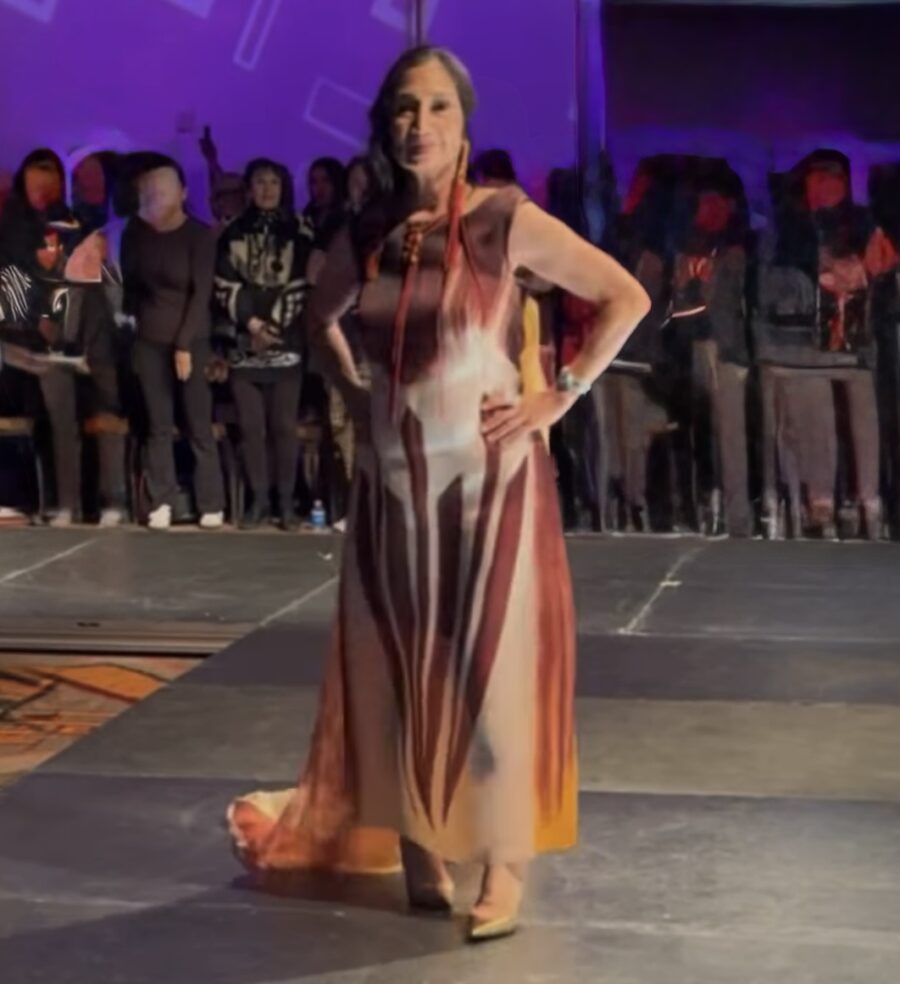
Native aesthetics appeared not as a folkloric element, but as a creative force capable of redefining contemporary fashion. Ancestral techniques, the use of sustainable materials, and the fusion of traditional symbolism with innovative designs demonstrate that Native fashion is not just memory, but avant-garde. SWAIA Native Fashion Week has expanded its vision by joining with Canada Native Fashion Week, a collaboration that consolidates an international network of creativity, a synergy that has allowed more than twenty designers to bring creations to the runway that go beyond the mainstream narrative.
Among the most innovative talents, Yolanda Skelton, designer of the Gitxsan Nation and founder of Sugiit Lukxs Designs, presented a collection that speaks of the Gitxsan aesthetic. On her garments she exhibited the three-dimensional appliqué technique, creating patterns that emerge from the fabric with a sculptural effect. The color palette evoked the colors of earth and water, central elements in Gitxsan culture, while the silhouettes balanced tradition and modernity with fluid cuts and structured details.

At SWAIA Native Fashion Week 2025, Sage Mountain Flower (Ohkay Owingeh/Taos Pueblo/Diné) presented the Taandi’ collection, inspired by the rebirth of nature and the transition between seasons. The name, reminiscent of spring awakening, is reflected in the delicate colors and natural textures. A message of beauty and resilience, “Each piece is a dialogue between past and present. Our art is not just decorative, but a way to tell our story and affirm our identity”, she said.
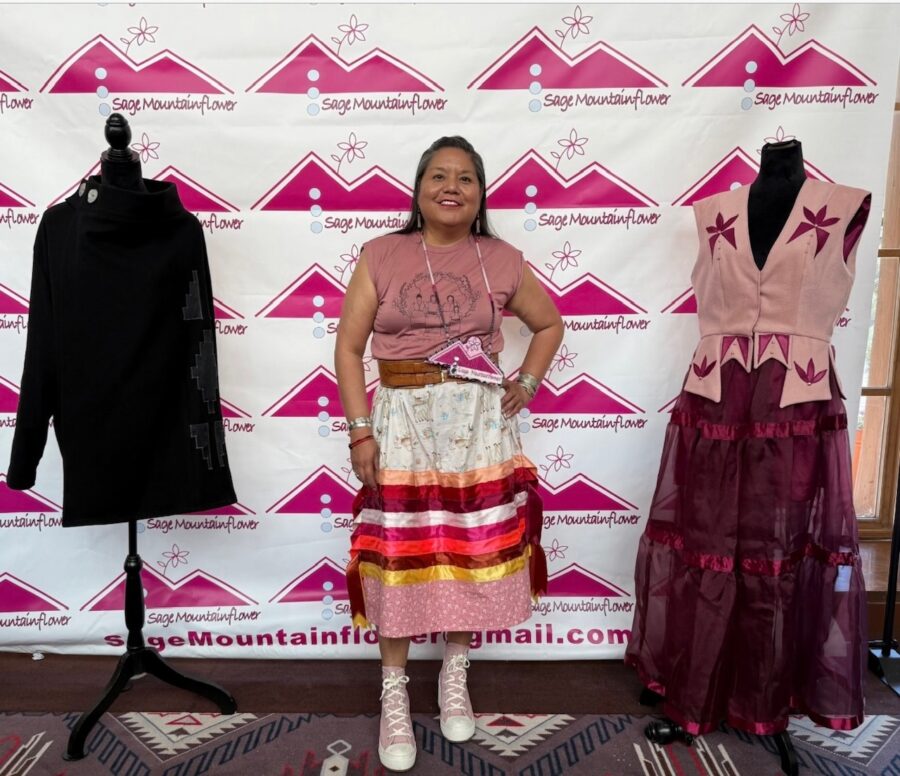
Among the most evocative collections is that of Vina Brown (Nuučaan̓uɫ and Haíłzaqv), who exalts the value of metals in indigenous tradition. Copper, the central element of her Copper Canoe Woman brand, featured prominently in the details of the garments, with handcrafted appliqués evoking ancient ceremonial ornaments. She then explored the link between sea and land with the use of vegetable silk and organic cotton dyed with native plant pigments and details inspired by indigenous traditions of the West Coast. Abalone trim and geometric engravings enriched the silhouettes, telling stories of navigation and cultural resilience.
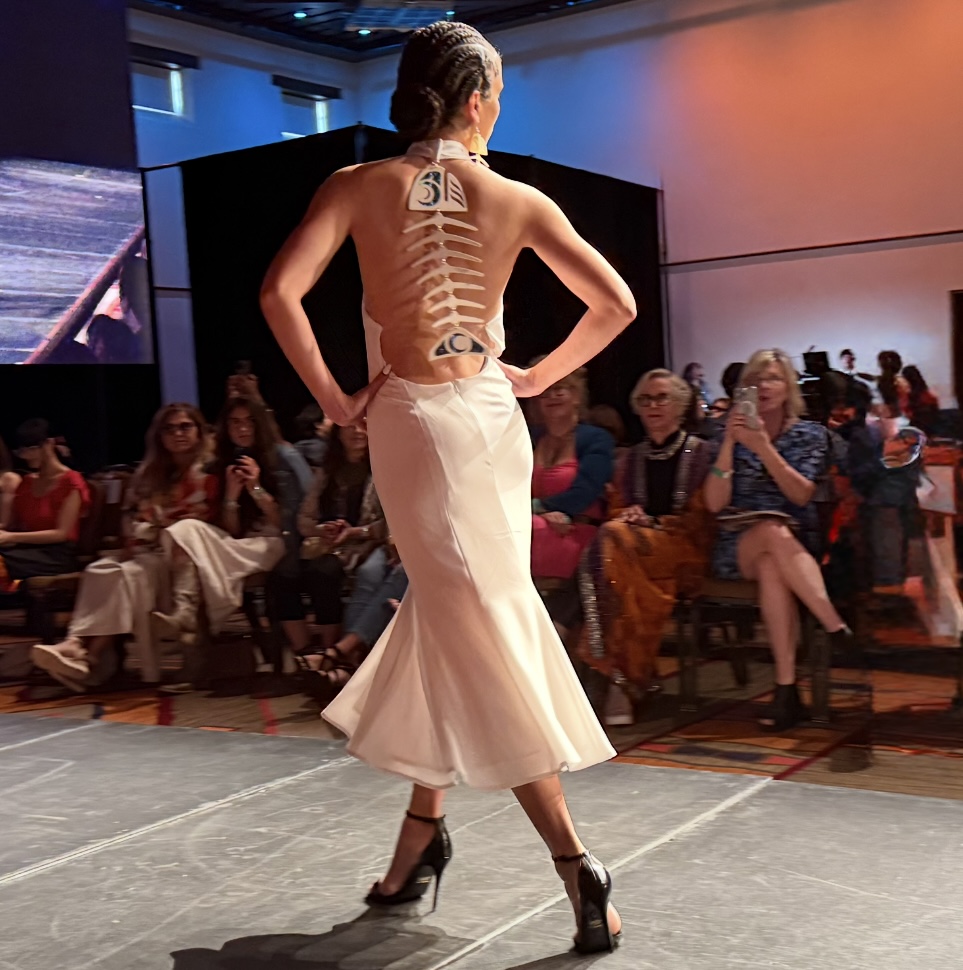
On the Canada Native Fashion Week side, Tierra Alysia Tapura (Kashia Pomo/Filipino), whose brand name is VIVIDUS, stands out with a collection of flowing silhouettes made of bamboo satin and linen blends, enhanced by pleated details and hand-chiseled metal appliqués, a tribute to Kashia Pomo craftsmanship.
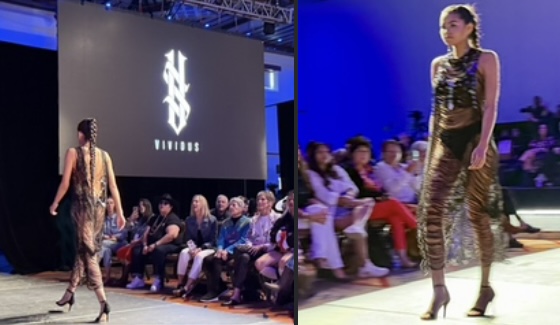
Randi Nelson’s (St’uxwtéws First Nation) proposals focused entirely on traditional leather work, reaffirming the link between fashion and territory. Her capes, tunics, and accessories were made from hand-tanned leather, using ancestral methods that enhance the material’s durability and softness. “For my people, leather is not just a material, but a heritage. Each fiber carries with it the memory of the land and the hands that worked it. To preserve it is to honor our history”, said the Canadian designer.
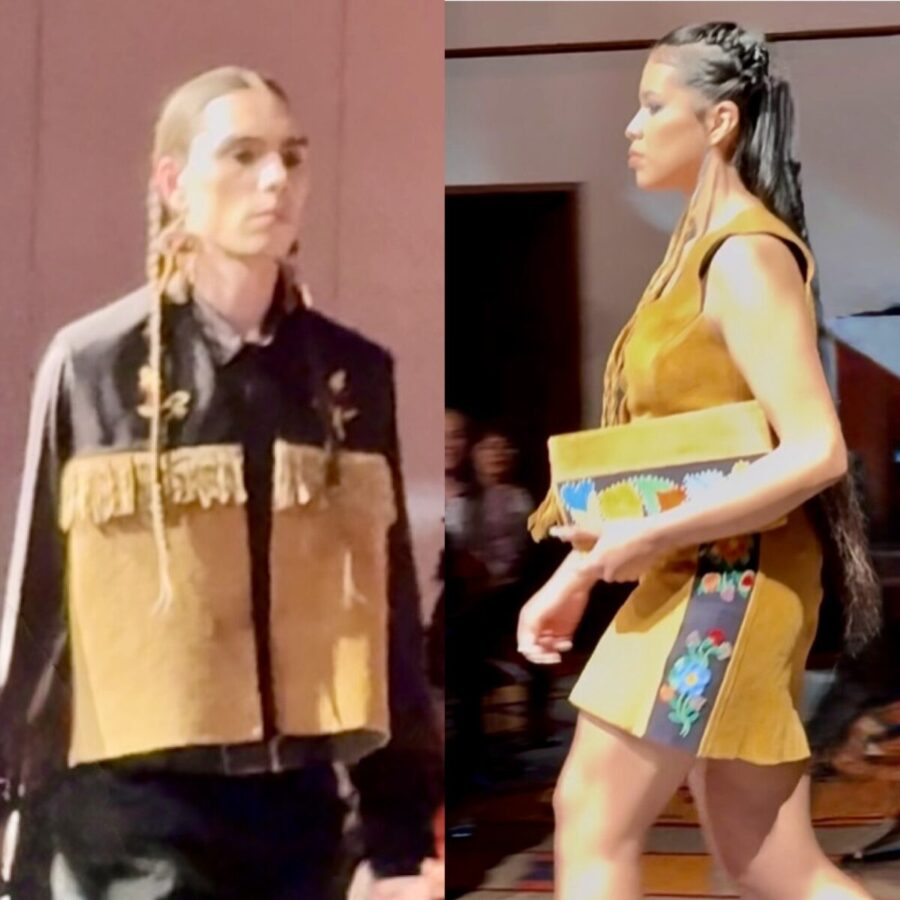
Finally, Cheryl Fennell (Métis) of Snowfly translated the Métis tradition into a sophisticated proposal, focusing on sustainable materials such as merino wool and leather treated with eco-friendly processes. Her wedding dress, made from dozens of weasel furs, initially raised eyebrows. However, upon reflecting on the significance of this animal to Native Americans and the artistry of its traditional tanning, perceptions changed, revealing a deep connection to primal culture.
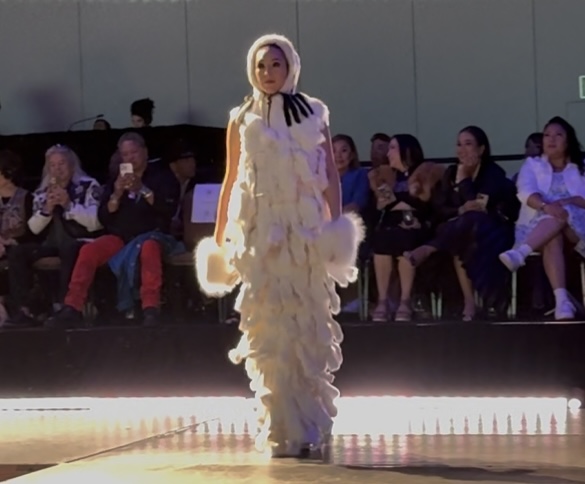
Closing the show, Deb Haaland’s appearance on the catwalk was greeted with a heartfelt standing ovation, accompanied by thunderous applause and shouts of enthusiasm. The presence of the political representative was not only a tribute to Native fashion, but an affirmation of identity and resistance. And SWAIA Native Fashion Week 2025 proved just that: native fashion is here to stay. The future is already here.












